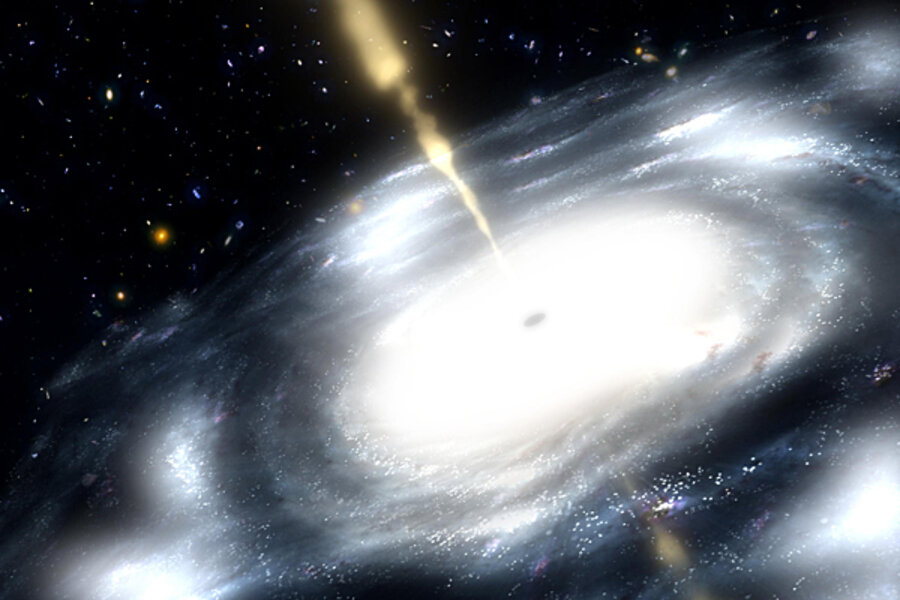Colliding black holes' energy jets could be detected
Loading...
When galaxies collide, the merger between the supermassive black holes at their hearts could create super-powerful jets of radiation that astronomers may eventually be able to spot with new space observatories, a new study suggests.
In the new study, physicists built computer models to study the merger between two gigantic black holes. They found that such events would create an incredibly energetic jet of electromagnetic radiation. And the cosmic show would actually begin as the black holes spiral toward each other, a while before the big gravitational crunch occurs, researchers said.
These jets would be similar to the linear jets shooting out from the vicinity of black holes along their axis of rotation, which astronomers have already detected. But the merger-created jets would be much more powerful, and they would be accompanied by less linear blasts of radiation – giving astronomers a decent shot at observing a black-hole collision as it happens, researchers said.
"There is a very real possibility that we will be able to detect these systems before a merger takes place," said study co-author Luis Lehner, a physicist at the University of Guelph and the Perimeter Institute for Theoretical Physics in Canada. "The ideal scenario is to know where it's going to happen." [Photos: Black Holes of the Universe]
If astronomers know where to point their instruments for a black-hole merger, they could learn a great deal about the nature of the universe.
They could, for example, perform more robust tests on Einstein's theory of general relativity – the current description of gravitation in modern physics.
"We've never tested Einstein's relativity in extreme conditions," Lehner told SPACE.com. "This would give us a chance to see if it holds up. If it doesn't, we can start looking at alternative theories."
Other researchers have modeled supermassive black-hole mergers before. But those groups simulated collisions in a vacuum. Lehner and his colleagues are the first to incorporate surrounding gas and dust â€" a more realistic scenario, but much more difficult to model.
"The problem becomes so much messier when matter is involved," Lehner said.
The researchers found that the merging black holes' orbital motion stirs up surrounding plasma – a kind of superheated, electrically charged gas. This churning induces two jets of radiation to emanate from each black hole. When the black holes merge, so do their jets.
These unified radiation blasts are incredibly powerful. According to Lehner, they could theoretically be seen from 2 billion- to- 6 billion light-years away. And the jets would also be accompanied by less directed bursts of radiation – which an observatory might be able to detect without necessarily being perfectly lined up.
That means a lot of these mergers could be detectable from near Earth, and thus observable. The research is detailed in the Aug. 20 edition of the journal Science.
Pinpointing a black hole merger's location will be tough, though, and may not be possible until the launch of new instruments.
Lehner cited the planned Laser Interferometer Space Antenna as one such promising piece of equipment. LISA, a joint mission of NASA and the European Space Agency, would detect gravitational waves from its orbit around the sun. Since a black hole mega-merger would emit very strong gravitational waves in addition to electromagnetic jets, LISA would allow astronomers to narrow their search considerably.
"By combining the two methods, you could do exquisite physics," Lehner said.
A LISA launch is a decade or two away, however, so astronomers will have to focus on the jets for now. Lehner and his colleagues will keep modeling black-hole mergers, trying to get greater and greater detail and accuracy.
"Black holes are powering some of the most energetic events in the universe," Lehner said. "That's why this is so exciting."





